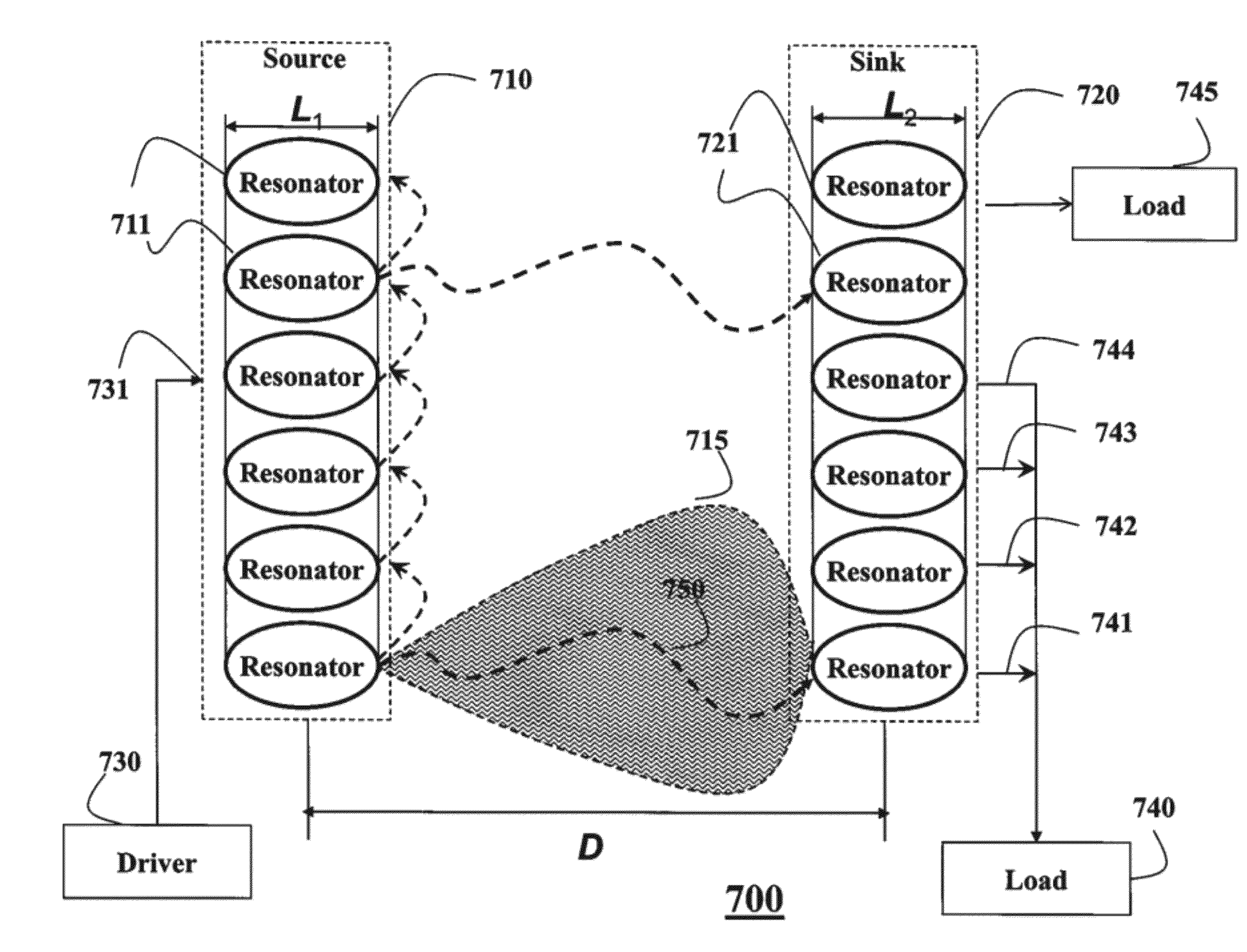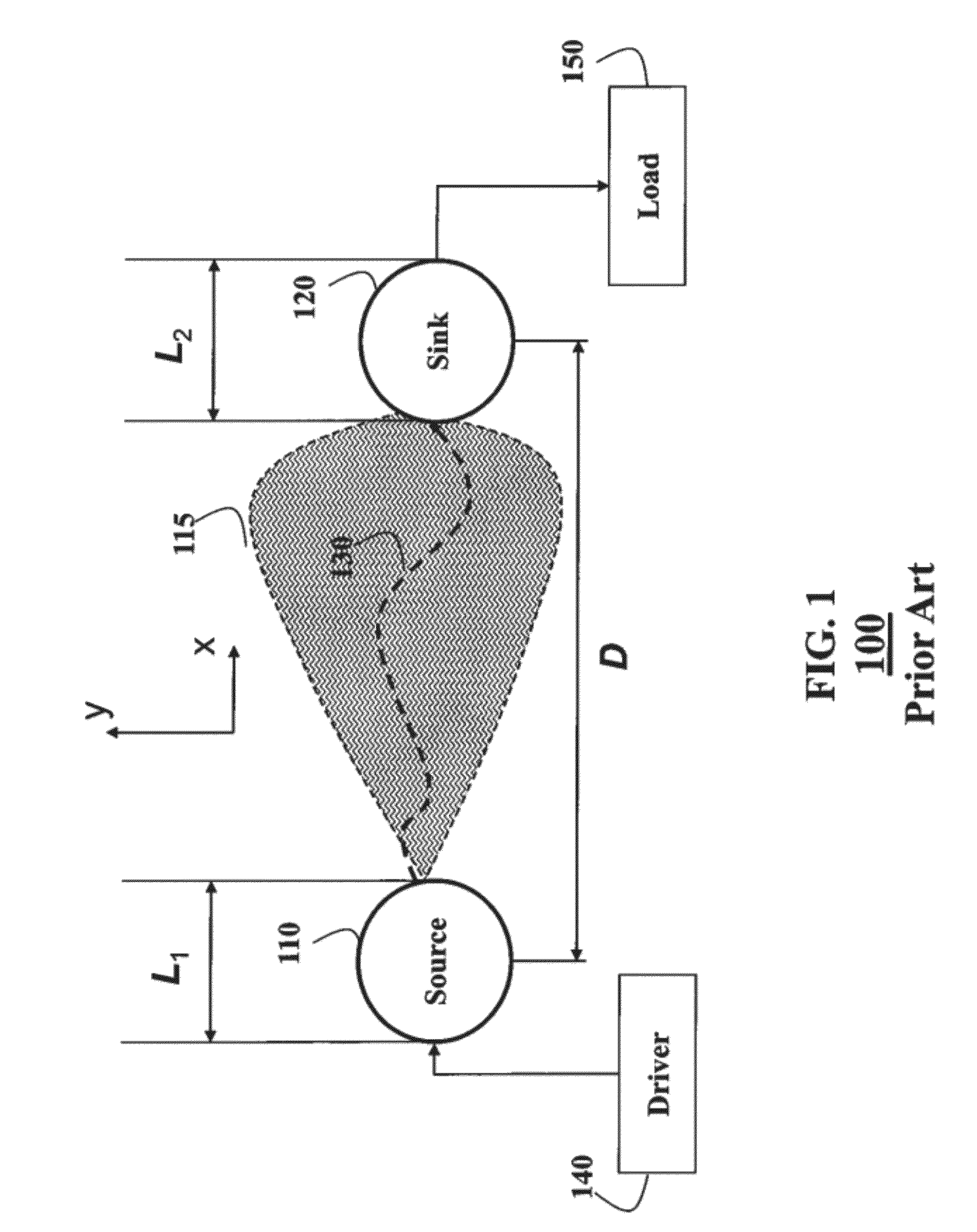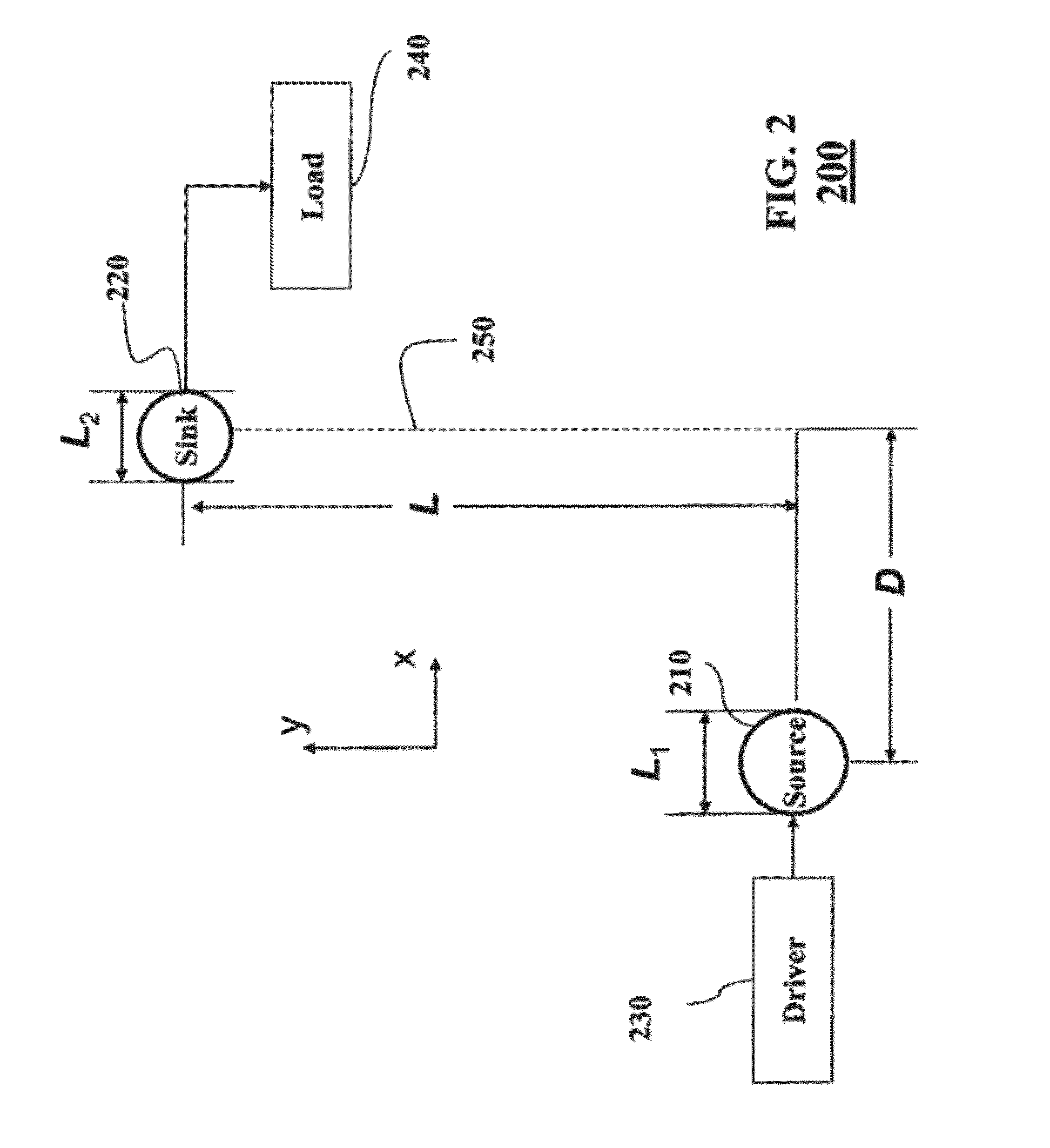System and Method for Automatically Optimizing Wireless Power
- Summary
- Abstract
- Description
- Claims
- Application Information
AI Technical Summary
Benefits of technology
Problems solved by technology
Method used
Image
Examples
example
[0081]FIG. 9 shows another example embodiment. Spiral resonators 910 resonating at 27 MHz form the resonator arrays of the source 920 and the sink 930. For example, both resonator arrays have six spiral elements separated by a distance D1. Two loop antennas with R radius are used as the energy driver 940 and the load 950. The separation between driver / load and source array / sink array is D2. The distance between the source and sink array is D.
[0082]For example, the energy is provided to the energy driver 940 via wired cable and then provided to the source via, e.g., inductive coupling at resonant frequency. The specified resonant mode is excited in the system and the energy redistributed over the whole system according to the resonant mode. The load 950 extracts the energy wirelessly from the sink 930. When the energy is extracted from the system, energy balance of the system is disturbed and more energy is provided from the driver 940 to maintain the balance. Accordingly, the energy...
PUM
 Login to View More
Login to View More Abstract
Description
Claims
Application Information
 Login to View More
Login to View More - R&D
- Intellectual Property
- Life Sciences
- Materials
- Tech Scout
- Unparalleled Data Quality
- Higher Quality Content
- 60% Fewer Hallucinations
Browse by: Latest US Patents, China's latest patents, Technical Efficacy Thesaurus, Application Domain, Technology Topic, Popular Technical Reports.
© 2025 PatSnap. All rights reserved.Legal|Privacy policy|Modern Slavery Act Transparency Statement|Sitemap|About US| Contact US: help@patsnap.com



